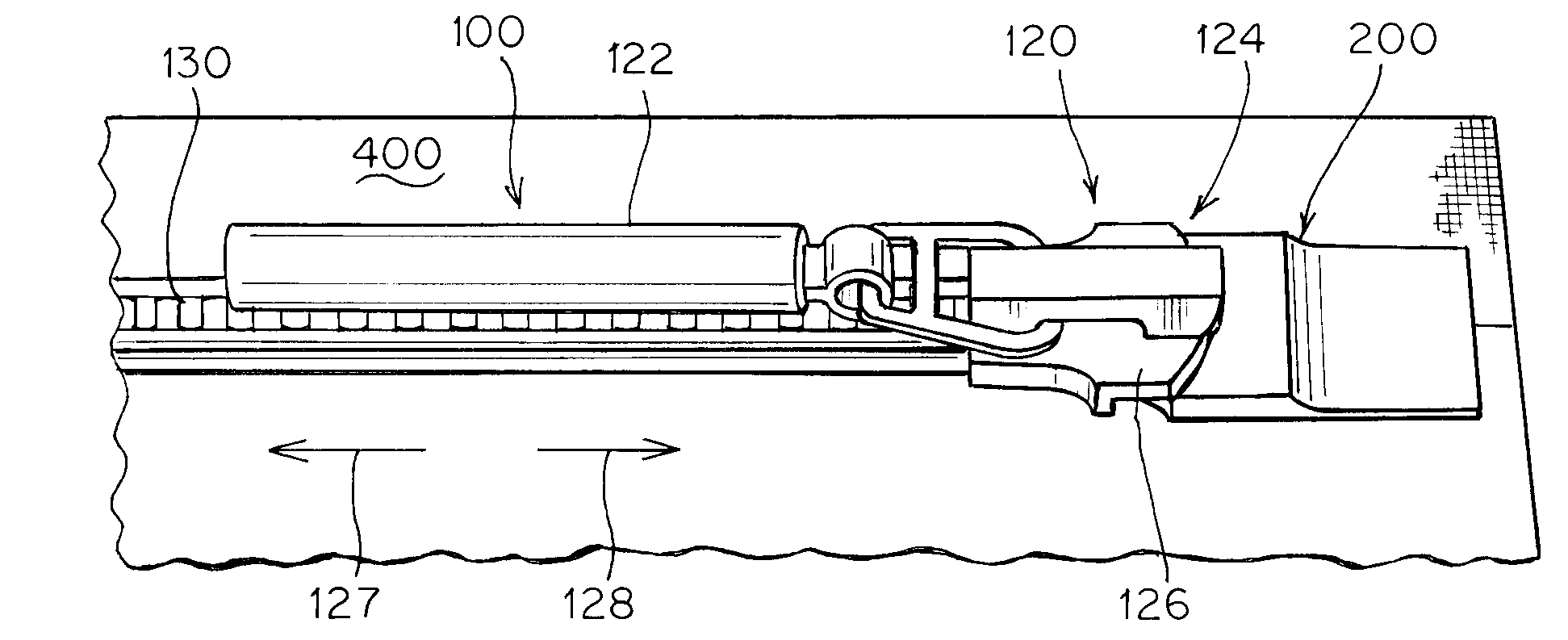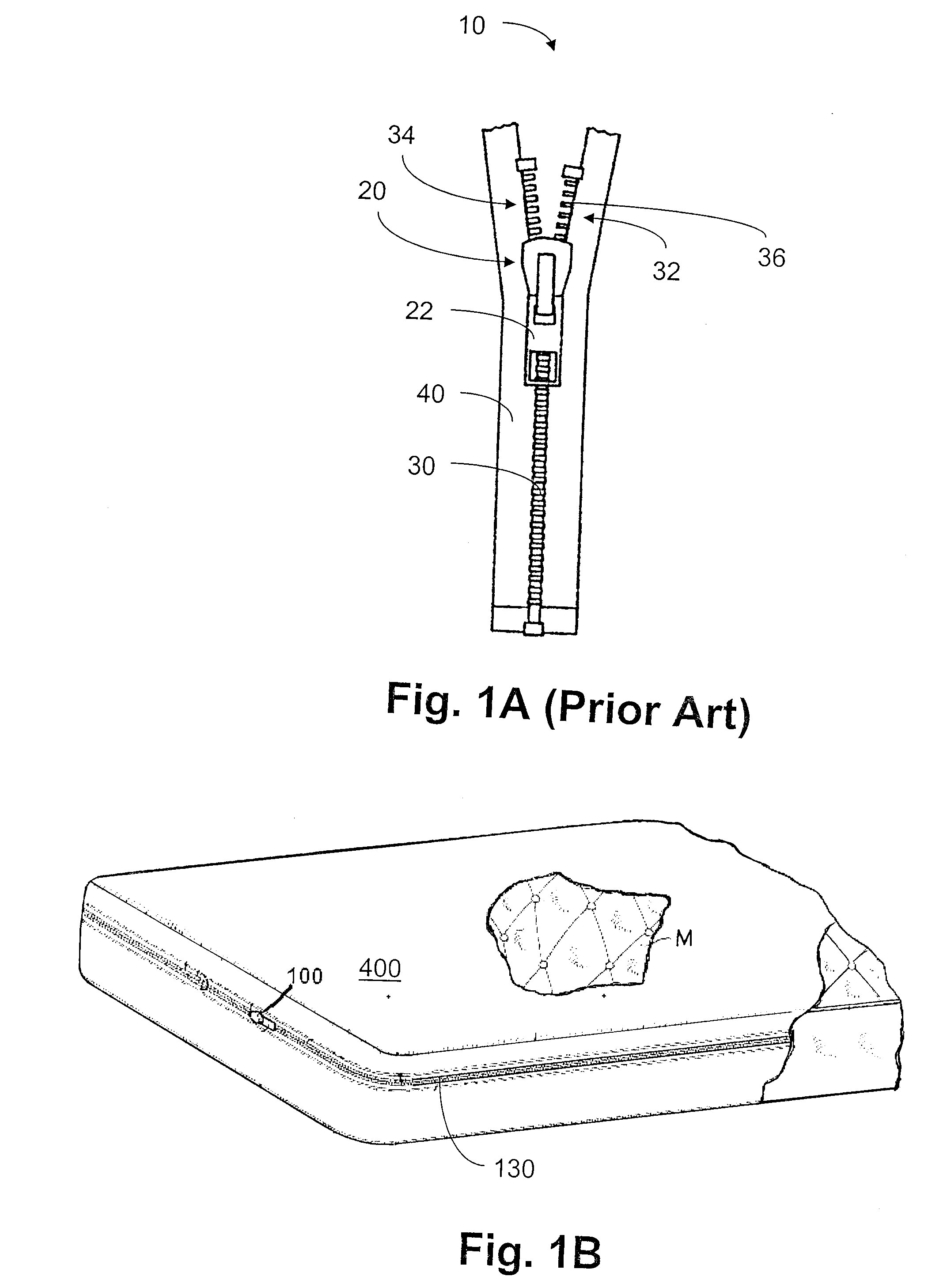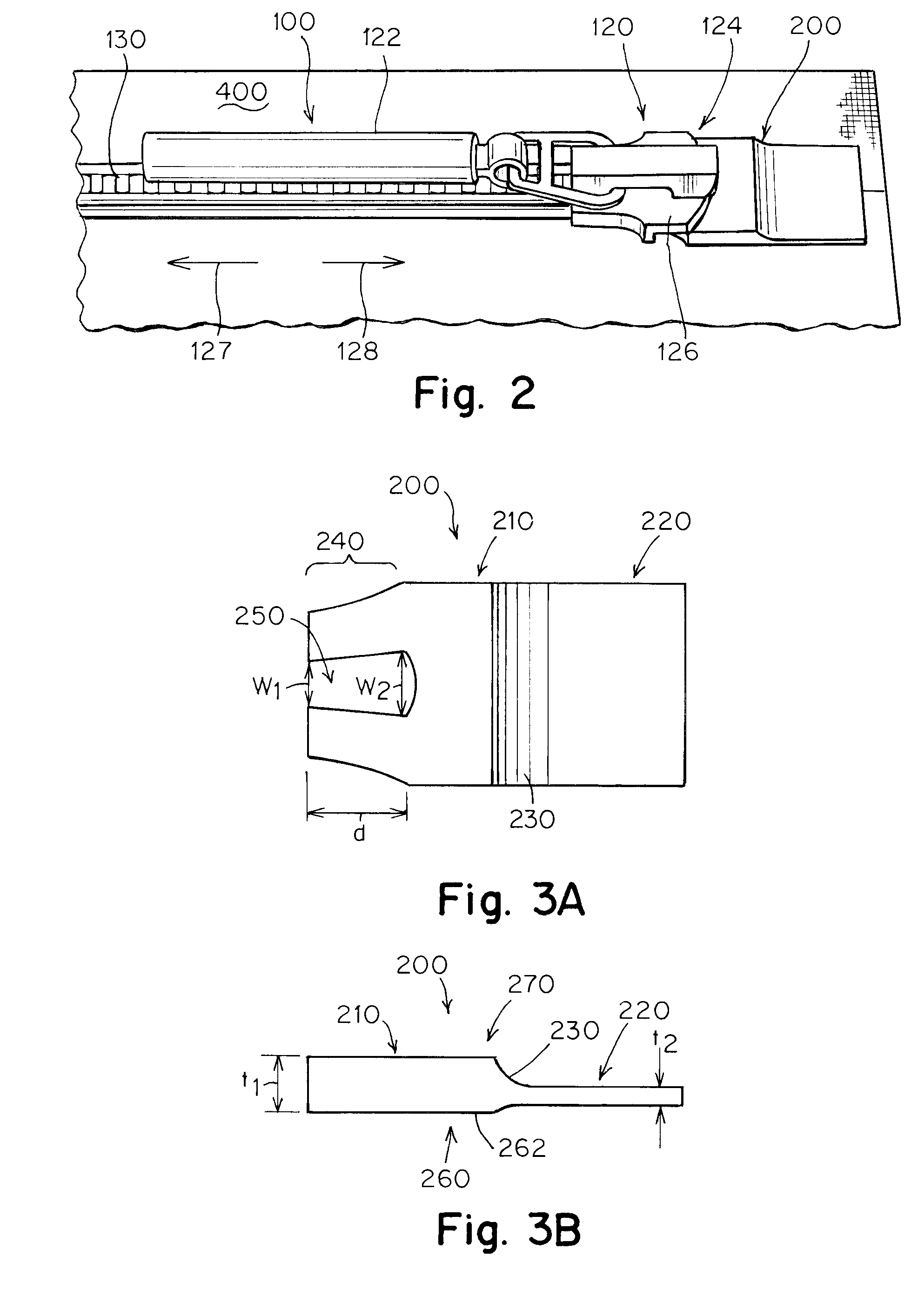Protective barrier for a zipper assembly
a technology of zipper assembly and protective barrier, which is applied in the direction of press-button fasteners, beds, bed linen, etc., can solve the problems of forming obstructions
- Summary
- Abstract
- Description
- Claims
- Application Information
AI Technical Summary
Benefits of technology
Problems solved by technology
Method used
Image
Examples
Embodiment Construction
[0040]Aspects discussed herein relate to systems and methods for providing a protective barrier at the end of a pair of linked zipper tracks in a zipper assembly so as to obstruct the migration of small particles and / or organisms from one side of the barrier to the opposite side of the barrier when the zipper assembly is closed. When traditional zippers incorporated on an article (e.g., padding material, mattress / pillow covers, duvets, comforters, etc.) for opening and closing the article are closed as much as possible by a user, a narrow opening at the end of the zipper tracks will almost invariably remain. Such an opening may be large enough (e.g., between about 1 and 10 mm2) for small organisms such as bed bugs and / or dust mites to migrate or crawl through the passageway provided by the narrow opening and move freely from one side of the article to the other. Accordingly, embodiments of zipper assemblies described herein may provide certain advantages by being constructed in a ma...
PUM
 Login to View More
Login to View More Abstract
Description
Claims
Application Information
 Login to View More
Login to View More - R&D
- Intellectual Property
- Life Sciences
- Materials
- Tech Scout
- Unparalleled Data Quality
- Higher Quality Content
- 60% Fewer Hallucinations
Browse by: Latest US Patents, China's latest patents, Technical Efficacy Thesaurus, Application Domain, Technology Topic, Popular Technical Reports.
© 2025 PatSnap. All rights reserved.Legal|Privacy policy|Modern Slavery Act Transparency Statement|Sitemap|About US| Contact US: help@patsnap.com



